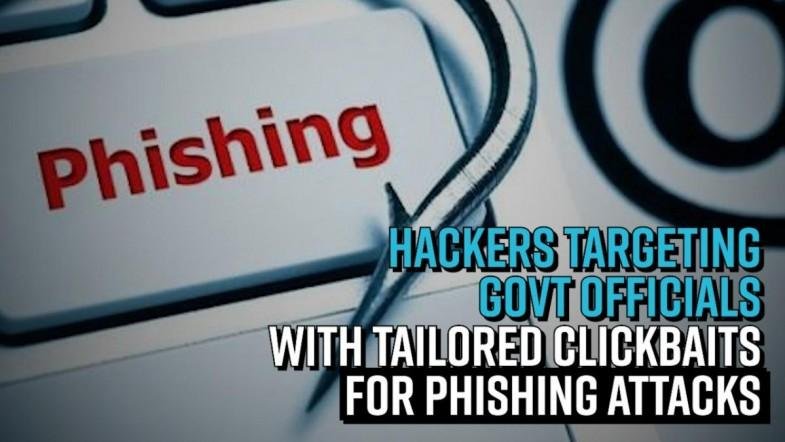
Phishing: Recognizing and Defending Against Cyber Threats
In today’s digitally interconnected world, technology’s rapid growth has brought numerous benefits, but it has also given rise to various cybersecurity challenges. One of the most prevalent and insidious threats is phishing. Phishing attacks have become increasingly sophisticated, targeting individuals, businesses, and organizations with the goal of stealing sensitive information, such as passwords, credit card details, and personal data. This article delves into the world of phishing, exploring its tactics, impacts, and strategies for protection.
Understanding Phishing
Phishing is a cyber attack that involves manipulating individuals into divulging confidential information, often by impersonating trustworthy entities. The term “phishing” draws an analogy to the act of fishing, where cybercriminals cast out a bait in the form of a fraudulent email, message, or website to lure unsuspecting victims. Once the victim takes the bait, the attacker gains unauthorized access to their personal or financial data.
Common Phishing Tactics
- Email Phishing: Cybercriminals craft convincing emails that mimic legitimate organizations or individuals, often requesting recipients to click on malicious links or download infected attachments. These emails may appear to come from reputable sources, such as banks, social media platforms, or government agencies.
- Spear Phishing: This tactic involves personalized attacks where cybercriminals gather information about specific individuals to tailor their phishing attempts. Attackers exploit personal details to create messages that seem genuine and increase the likelihood of success.
- Smishing: Short for “SMS phishing,” smishing involves sending phishing messages via text messages. These messages may contain links to malicious websites or ask recipients to reply with sensitive information.
- Vishing: Voice phishing, or vishing, uses phone calls to deceive victims into revealing confidential information. Attackers often pose as trusted entities, such as bank representatives, and manipulate victims into sharing account details.
- Pharming: In pharming attacks, cybercriminals manipulate the domain name system (DNS) to redirect users to fraudulent websites without their knowledge. This method doesn’t rely on users clicking on malicious links but rather exploits vulnerabilities in the internet’s infrastructure.
Impacts of Phishing
The repercussions of falling victim to a phishing attack can be severe, affecting both individuals and businesses:
- Financial Loss: Phishing attacks can lead to unauthorized access to bank accounts, credit card fraud, and financial losses.
- Identity Theft: Stolen personal information can be used to commit identity theft, leading to damaged credit scores and significant financial and emotional distress.
- Data Breaches: Businesses face the risk of data breaches, which can result in compromised customer data, legal consequences, and reputational damage.
- Malware Infections: Clicking on malicious links or downloading infected attachments can introduce malware to a victim’s device, potentially leading to data theft, system compromise, or ransomware attacks.
Defending Against Phishing
As phishing attacks continue to evolve, individuals and organizations must adopt proactive measures to safeguard against these threats:
- Education and Awareness: Regular training on phishing awareness can empower individuals to recognize suspicious emails, links, and messages. Employees in organizations should be educated about best practices and potential red flags.
- Email Filters: Employing advanced email filtering solutions can help identify and quarantine potential phishing emails before they reach recipients’ inboxes.
- Multi-Factor Authentication (MFA): Enforcing MFA adds an extra layer of security by requiring users to provide multiple forms of verification before accessing accounts or systems.
- Website Verification: Always verify the authenticity of websites before entering sensitive information. Check for HTTPS encryption and look for any inconsistencies in the URL.
- Cybersecurity Tools: Utilize reliable antivirus and anti-malware software to detect and prevent phishing attacks.
- Regular Updates: Keep operating systems, browsers, and software up to date to patch known vulnerabilities that attackers might exploit.
- Trust Your Instincts: If an email or message seems suspicious, trust your instincts and avoid clicking on links or sharing sensitive information.
Conclusion
Phishing attacks remain a significant and growing threat in the digital landscape. Cybercriminals continuously refine their tactics to deceive unsuspecting individuals and organizations. By staying informed, raising awareness, and implementing robust cybersecurity measures, we can collectively defend against the artful schemes of phishing and protect our sensitive information from falling into the wrong hands. Remember, vigilance is the key to staying one step ahead of these cyber threats.
